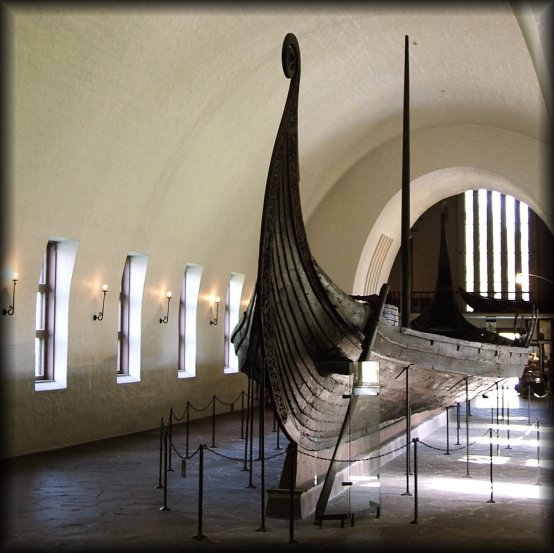
The Oseberg Ship at the Viking Ship Museum. The Oseberg Ship was found in a large burial mound at the Slagen farm in Vestfold and excavated in 1904. The ship was built in around 815-820 A.D. and had been used as a sailing vessel for many years before it was put to use as a burial ship for a prominent woman who died in 834. The ship, built of oak, was 22 meters long and 5 meters wide. The 12 strakes were secured with iron nails. The ship was designed for both rowing and sailing. With a square sail of about 90 sq. m., it could reach speeds of over 10 knots. The top strake had 15 oar holes. The skeletons of two women were found in the grave. One, aged 60-70, suffered badly from arthritis and other maladies; the second was aged 25-30. It is not clear which one was the most important in life, or whether one was sacrificed to accompany the other in death. Although the high-ranking woman's identity is unknown, it has been suggested that it is the burial of Queen Asa of the Ynglinge clan, mother of Halfdan the Black and grandmother of Harald Fairhair. This theory is now generally dispelled, and it is now thought that she may have been a priestess.